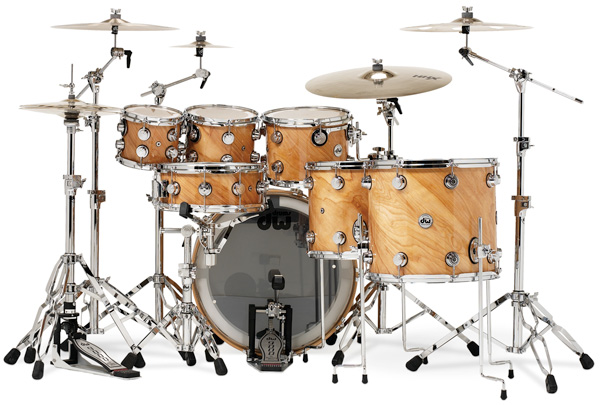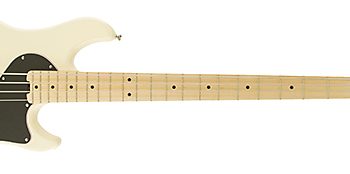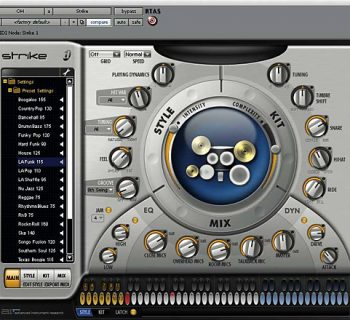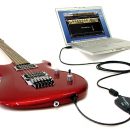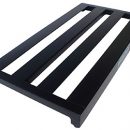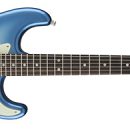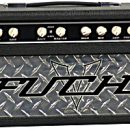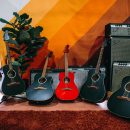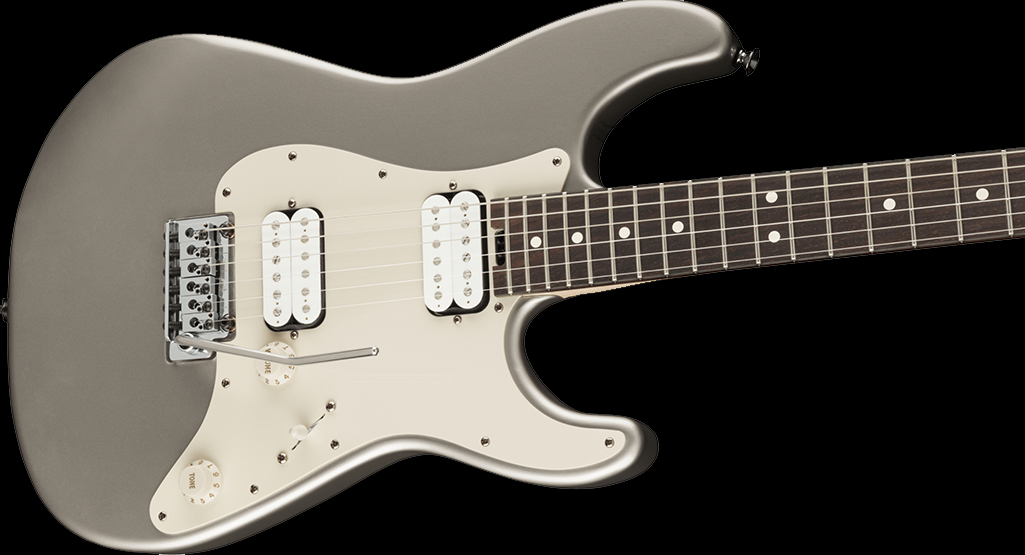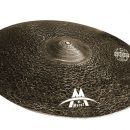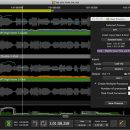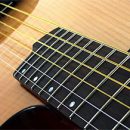| Category | Value | Rating |
| Features | 25% | |
| Usability | 25% | |
| Sound | 30% | |
| Documentation & Support | n/a | |
| Price | 20% | |
|
|
||
| OVERALL RATING = 3.3
3.6 stars or better: Outstanding, WIHO Award |
||
In the age in which we live, humans are driven to the discovery of new technological advances that we perceive will make our lives easier or better. For example, our desire for a more efficient way to communicate lead to the invention of the telephone. Later, as a need for more portable communication became apparent, we developed cellular phone technology. Similarly, drum construction has undergone exciting evolution.
When considering that the first drum was nothing more than an animal hide stretched over a hole in the ground, any modern kit is a space shuttle by comparison. However, the construction of what we superficially perceive as the “modern drum kit” has evolved greatly over the last couple of decades. For instance, for a long time, most major manufacturers made their top-of-the-line instruments completely out of two types of wood: maple and birch. To this day, kits are still made (and widely used) with these same materials. However, recently drum kits have begun to be made from different, more exotic materials such as mahogany, oak, cherry, walnut, ash, and bubinga, just to name a few. Manufacturers have seen great success with these additional options for players, which has lead to a desire to do even more.
Over the last couple of years, the drum industry has witnessed companies making hybrid drums comprised of multiple materials within the same kit. Examples of this include Pearl’s Reference Series Drums, which combine the use of maple, birch, and mahogany; Tama Drum Kits, which feature a new combination of birch and bubinga; and the PHX Phoenix Drums from Yamaha. But what of Drum Workshop and their contribution to this evolution of the modern drum set?
With Drum Workshop’s new Specialized Shell Configuration (SSC) line of drums, they have taken the control of sound through hybrid shell construction to a whole new level.
The DW SSC Kit sent to us for review can only be described as an instrument of presence. Aside from the fact that you might need to take out a loan to purchase one of these babies, its incredible low end sustain across all of its seven pieces, immaculate and beautiful appearance, and notable innovations in hardware (particularly on the snare drum) and shell construction, make the kit a heavy hitter in the modern rock market. Though not ideally suited for music styles calling for drums tuned to a higher pitch, rock players will find the mid and low tuning range of this kit particularly lust-worthy.
Features
![]()
To get a clear understanding of what one is investing in when purchasing one of these drum kits, let’s review the nature of Drum Workshop’s newfound technology. Considering all of the recent advancements in drum making discussed in the aforementioned section (specifically regarding hybrid wood combinations), no company has yet to really deal with the grain orientation of its manufactured shells the way DW has addressed this topic. By this, we are referring to the wood grain direction of each ply as well as the specific way in which each is layered atop of another. Drum guru John Good has found that the use of certain grain orientation and/or the mixing of them greatly affects a drum’s note and response.
Through experimentation with different ply/grain combinations, DW has arrived at four new shell types: the standard seven-ply shell, the eight-ply horizontal and vertical grain combination shell known as the V.L.T. shell (Vertical Low Tambour), the eight-ply diagonal grain shell known as the X Shell (for its literal crossing effect), and the eight-ply V.L.X. shell (which contains a combination of vertical and diagonal grain plies).
These shell configurations increase low-end frequencies, respectively. In other words, the highest frequencies for any given size would be provided by a standard shell, while the lowest would be delivered from the V.L.X. Therefore, one could hypothetically have a ten-inch maple rack tom made of the same number of plies and yet with different grain combinations, get four very distinct sounding shells. This technology is geared at things like achieving a wider tonal spread between drums in any configuration and ultimately allowing the drummer more sonic control over his/her tone.
The review kit sent to us was a seven-piece Specialized Shell Configuration Kit made of North American hard rock maple with a majestic natural lacquer over tropical olive finish (more on that later). The set included a 22”x18” solid kick drum (without any tom mounting hardware), 8”x7”, 10”x8” and 12”x9” rack toms, 14”x12” and 16”x14” floor toms and a 5½”x14” snare drum.
The bass drum was configured as a V.L.X. shell, as were the floor toms. The 10” and 12” racks, as well as the snare, were configured as V.L.T. shells, and the smallest rack tom was an X shell. The kick drum came equipped with a muffling pillow so as to allow for the most common contemporary tuning scheme as well as a vented, resonant head so as to allow good airflow and better feel. All drums featured Remo coated/clear heads.
Regarding hardware, there were some very notable features in the SSC kit. First, all drums (except for the bass drum) came equipped with triple flanged hoops and chrome hardware. The kit uses the DW standard, patented Suspension Tom Mounting System, which does not use washers or grommets to get in the way of the tension rods (as is unfortunately the case with some other mounting systems).
Surprisingly, it should be noted that the snare drum we received had a flanged hoop that was not perfectly in round. It seemed as if the edge had been grinded away somehow. Considering how important quality is to this company, we were rather surprised by this finding, especially in such a premium kit.
Also standard on DW kits are their true pitch tuning rods, which have thirty percent more threads than a standard tension rod, intended for finer tuning abilities. A more recent addition to DW’s list of features is the MAG Snare Throw Off. Working off of a magnet that is strategically placed in the body of the throw off, the mechanism operates from a horizontal adjustment. Combined with this design is the 3P three-position butt plate. This second part of the snare mechanism allows for three different settings of snare contact per given tension of the throw off.
As is commonplace with DW instruments, the visual aesthetic was very high. The SSC kit might just be the most beautiful set of naturally finished drums we have ever seen! To put it briefly, the drum shells look like hollowed out tree bark that was then simply lacquered. There is a very primal, raw element to the look of these drums. Yet, at the same time, there is also a sort of antique furniture quality to them, especially when the wood is coupled with the chrome hardware (which does not take away from the wood’s finish at all).
What is most striking about these shells visually is (ironically) also what is striking about the kit audibly: the wood grain. It is not very common to see drums with a diagonal wood grain. Usually, even on DW drums in fact, natural wood finishes appear to run horizontally. However, with its dark grain and natural rainbow of browns, oranges and beiges, the drums look nothing less than incredible. If this doesn’t convince you of how gorgeous these drums are, consider this: when taking these drums to a gig, we received compliments from a jazz bassist as to how beautiful they were. Considering how beautiful of an instrument an upright bass is, and how unnecessary it is for another instrumentalist to comment on your gear, attention like this should not be taken lightly. We were so taken by surprise at the remark that we offered the guy some free drum lessons… but not on this kit.
Usability
![]()
The SCC kit was supplied with outstanding Drum Workshop 9000-series hardware, but that hardware is not part of the review nor the pricing since it isn’t bundled with the kit at retail.
With regards to physical use of the kit, particularly pertaining to the kit’s hardware, there were both pros and cons. On the one hand, because the kit included a “solid” wood bass drum (in that it did not have any tom mounting hardware whatsoever), the drum had increased low end sustain and was much easier to carry when bringing it to a gig. This is extremely important for the working drummer, considering the fact that it is usually the kick drum that is hardest to move around because of its size. Add many flights of stairs and tight spaces and you are just asking for trouble. On the other hand, while we found the floor tom legs to be well made and sturdy, we also felt that the steel bars were incredibly heavy.
One final note about the kit’s hardware is how great we felt about the design of DW’s tom mounting system. Because it does not interfere with the path of the tension rods, a more even tuning can be easily achieved. This is such a plus considering that so many systems, which do work off the tension rods, usually interfere with the straight path of the rod into its receptacle as a result of the fact that most of these mounts are not made perfectly “in round.”
Though we will discuss the sound of the kit in much more detail in the next section, it should be noted that as a result of the various sizes and wide tuning range, buying a kit like this is really like buying multiple configurations all at once. With seven pieces in total, you can assemble a miniaturized “Peart-sized kit,” a bop kit with a higher tuning and the use of the 8”, 12”, and 16” toms (the later being a bass drum), a Bonham kit with a more wide-open tuning, or your standard pop/rock kit.
Sound
![]()
Kick
Out of box, just tapping the batter head of the kick with our finger delivered a low end rumble which was really something else. Our first attempt putting a pedal on it came with a musical being performed in a black box theater. What surprised us was not how it sounded in the theater for the performance, but rather how the conductor mentioned that the kick needed to be quieter during rehearsal when it was already being played heel down and with a felt beater (inside of a heavily carpeted room, no less). Though the included muffling pillow did provide some more focus on a later trial, we ended up switching the stock batter and resonant heads for an Aquarian Superkick 2 and Aquarian ported head, respectively. We also exchanged the muffling pillow for two standard, cotton sleeping pillows, and switched the beater to its plastic side.
The attack was so incredibly sharp that the drum seemed to have a natural equalization on it. The focus of the kick should especially be noted considering that it is our personal preference to have wide open tom tom sounds, and even through busy hand/foot combinations the kick cut through like a knife. We were also rather curious as to how it would sound with a completely wide, open tuning, so we left the Aquarian heads on (to at least help with some focus) and played the bass drum allowing for an open sound (no burying of the beater) with a felt beater. The drum sounded so big that it seemed larger than a 22”.
Snare
In a number of ways, we felt that the included snare stole the show. Some of the words which came to mind when playing this drum out of box included: clear, crisp, live, sensitive, aggressive, full-bodied, and versatile. The drum had an incredibly wide tuning range, which we felt could be attributed to both the finer threading of the tension rods as well as the special grain configuration of the shell (which in this case was the V.L.T. shell).
DW Drums are normally known for being able to exist comfortably in a low tuning. However, with this new technology, the drums have an even wider stretch, which allowed us to really experiment with this drum. At your typical medium-high to high tuning range, the drum had great presence with fantastic high-end rack. What was also particularly nice to us was the definition we received from a dead center hit on the drum (lacking a rim shot). This drum’s center hit was sharper than most other snare drums’ rim shot sound!
However, at a much lower tuning range, the drum sounded incredibly powerful and gave a thuddy, fat sound. It would most certainly be an asset in the studio (for its many sound possibilities) as well as live (for its ability to cut through so well). With whichever tuning scheme we used, we also loved how the body of the drum was never lost. Usually, higher-pitched drums sound thin and lower pitched ones sound like, well, a cardboard box. In any case, the snare drum consistently maintained some sort of useful tone.
Coupled with the 3P butt plate, there were so many sound options! The presets provided a wide enough difference that the drum took on a completely different character at each setting. Try the loosest setting and you have a huge rock drum. With the medium setting, you have your standard snare sound that could work for anything from jazz to rock to country, etc. Place it on the tightest setting and you will get a definition in your snares that is as close to a marching drum sound as you’ll get on a kit.
Toms
The heart of any drum kit really resides in the kick and snare, as most of your typical drummer’s time keeping is done on these two instruments. Yet, in many ways the sound quality of a high-end kit is usually determined by the toms sound as it is usually the toms that are the most exposed in a mix. Even when muffled, the rack toms are usually allowed to present the purest drum sound to allow for contrast to the kick and snare.
The three rack toms included in this kit make the most of this opportunity to speak to an audience, with great pop and projection regardless of their tuning. At higher tuning ranges, the toms do not choke, which again can be attributed to DW’s new shell technology. At lower tuning ranges, the toms were thunderous with miraculous amounts of sustain.
Floor Toms
It is has been our experience in the past that while many floor toms sound descent, it is too often that as these particular drums in the set get larger in size, they usually retain their attack but lose sustain. These drums most certainly do not have that problem. While the 14” sounded great right out of box, we found that by changing the batter head to a Remo Coated Ambassador, the drum really opened up and had such beautiful sustain and tone. The drum was definitely more round sounding with this change.
That said, we felt that the star of the floor tom show was the 16”x14” floor. Not only did the drum have great attack, but the magic truly lied in its sustain. Usually drums at this size cannot speak tonally. This drum has no problem doing that, which can be attributed to both the V.L.X. wood grain providing the deepest tonality possible as well as the shallower depth of the drum.
All
Rock and metal drummers will especially love the sound of this kit. But if your style of playing calls for drums tuned to a higher pitch — perhaps pop or young country/crossover music, while the higher tunings are certainly good and usable, you will not do these drums justice configured that way. Stick to the middle and low tunings and prepare to be immersed in fantastic tone.
Documentation and Product Support
Though there is rather little need for instructions on an acoustic drum set, the gear that came to us was accompanied by a very elegant looking box containing a limited warranty, memory clamps, extra tension rods, three modeled drum keys, a buffing rag, and a DVD which had a couple of interviews and playing examples from DW artists, as well as some tips on proper maintenance of the instrument.
Coupled with a welcoming message that was written in a number of languages, it seems clear that Don Lombardi and John Good wish that their customers feel part of an exclusive club or family that all share a mutual appreciation for these drums. We also believe that DW humbly feels that a person buying a kit of this sort no longer needs instructions on set up, but if you’re inexperienced yet well financed, the good news is that the DW kit shipped mostly pre-assembled in the boxes.
![]() The complete SSC kit as tested (MSRP $11,321) has a typical street price closer to $6,500.
The complete SSC kit as tested (MSRP $11,321) has a typical street price closer to $6,500.
EX |
List |
MAP |
| 7x8 |
$1,137.00 |
$682.20 |
| 8x10 |
$1,217.00 |
$730.20 |
| 9x12 |
$1,326.00 |
$795.60 |
| 12x14 |
$1,573.00 |
$943.80 |
| 14x16 |
$1,912.00 |
$1,147.20 |
| 18x22 |
$3,059.00 |
$1,835.40 |
| 5.5x14 |
$1,097.00 |
$658.20 |
|
$11,321.00 |
$6,792.60 |
Though the kit is fantastic both in sound and appearance, it is not perfect (as made evident by the snare hoop), and for a kit at this price, perfection is necessary.
Additional Comments
A while ago, we read an article about Hoobastank drummer Chris Hesse. In the Modern Drummer feature, he discussed the ultimatum that his father presented to him as a young player where he was either willing to help his son purchase a used car or a professional set of drums.
Though most pro level kits are not cheap, it is difficult to conceive getting a good quality used car for the average price of a pro kit (typically in the $2,500 to $5,000 range). However, for the price of the SSC kit, you could end up in a pretty decent ride. Of course, there’s not much point getting to the gig in style only to pull out your old Export or Imperialstar kit, right?
Contact Information
Drum Workshop
www.dwdrums.com

